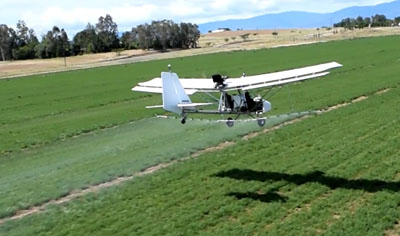 You may not know this Dragonfly airplane but I do. Very well. Since before it was called Dragonfly, I followed the development of this unusual aircraft by Bobby Bailey. You probably don’t know him either but he’s one of the most inventive light aircraft designers. A man of very few words, he prefers to create than to talk about it.
Dragonfly is an important icon in the hang gliding community. This aircraft was purpose-built to tow hang gliders aloft. At a place near Sun ‘n Fun called Wallaby Ranch, this happens nearly every day of the year. Proprietor Malcolm Jones founded “the Ranch” in 1992. He has a fleet of Dragonflys that he uses to tow up experts, students learning to fly, or almost anyone wanting to get an introduction to hang gliding.
Dragonfly has been fantastically productive, towing so many thousands of flights that I doubt they could be accurately counted.
You may not know this Dragonfly airplane but I do. Very well. Since before it was called Dragonfly, I followed the development of this unusual aircraft by Bobby Bailey. You probably don’t know him either but he’s one of the most inventive light aircraft designers. A man of very few words, he prefers to create than to talk about it.
Dragonfly is an important icon in the hang gliding community. This aircraft was purpose-built to tow hang gliders aloft. At a place near Sun ‘n Fun called Wallaby Ranch, this happens nearly every day of the year. Proprietor Malcolm Jones founded “the Ranch” in 1992. He has a fleet of Dragonflys that he uses to tow up experts, students learning to fly, or almost anyone wanting to get an introduction to hang gliding.
Dragonfly has been fantastically productive, towing so many thousands of flights that I doubt they could be accurately counted.Workhorse Dragonfly Rancher Takes on Heavier Duties — Aerial Work LSA?
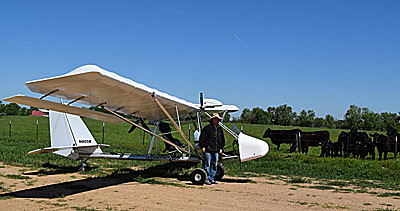
Pitman Air recently gained FAA acceptance for a work-capable aircraft called Dragonfly Rancher.
You may not know this Dragonfly airplane but I do. Very well. Since before it was called Dragonfly, I followed the development of this unusual aircraft by Bobby Bailey. You probably don’t know him either but he’s one of the most inventive light aircraft designers. A man of very few words, he prefers to create than to talk about it.
Dragonfly is an important icon in the hang gliding community. This aircraft was purpose-built to tow hang gliders aloft. At a place near Sun ‘n Fun called Wallaby Ranch, this happens nearly every day of the year. Proprietor Malcolm Jones founded “the Ranch” in 1992. He has a fleet of Dragonflys that he uses to tow up experts, students learning to fly, or almost anyone wanting to get an introduction to hang gliding.
Dragonfly has been fantastically productive, towing so many thousands of flights that I doubt they could be accurately counted. Malcolm alone reports doing more than 30,000 flights with a student …safely, by the way.
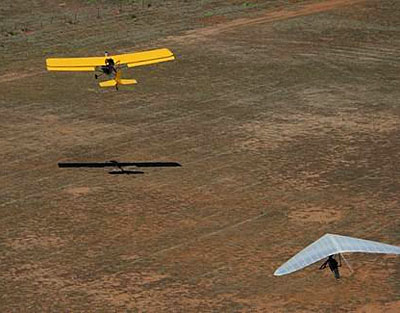
During some competition events, I have seen 11 Dragonflys doing this drill. It is nearly mind-blowing to watch a collection of these awkward-looking aerial tractors whizzing this way and that in an utterly chaotic-looking yet amazingly well-choreographed ballet of tow planes and glider pilots. You literally have to see it to belief it. My words to describe it pale in comparison.
Dragonfly Grows Up
Dragonfly was designed to fly slowly. A hang glider cannot be towed safely at speeds much above 30-35 mph. Dragonfly can stall below 20 mph. It has elephant-ear-sized flaperons, a large empennage, and Vne was 55 mph on the first models. As I said: purpose-built to tow hang gliders.

Ed Pitman, a longtime hang glider pilot turned aircraft manufacturer, recently gained approval for a Dragonfly Rancher model as a Special LSA. “Got both 900 & 582 series Dragonfly Ranchers approved SLSA yesterday,” he wrote, taking after Bobby in being frugal with words. I pried a few more from him.
“We reworked the Dragonfly to make it more pilot friendly to the GA market and targeted farmers and ranchers, by making it a tax-deductible piece of farm equipment.” Under current regs a farmer can use such a flying machine for his own fields. “However,” Ed added, “second and third world countries are interested in it for commercial crop dusting.”
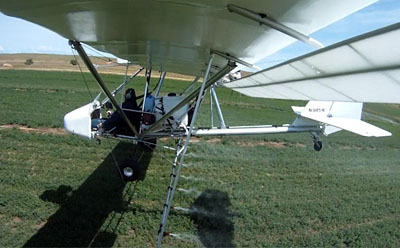
“Vne on Dragonfly was 66 mph (upped from those earlier models) and Rancher goes further, to 88 mph Vne.” The newly beefed-up Dragonfly can carry enough payload to do micro spraying, which — if you don’t know as I did not — is a legitimate method of application in some situations.
“We increased the gross weight to 1,200 pounds because we will be putting it on floats, also,” said Ed. “Bobby re-schemed the wings, which only gained 2.2 pounds each to get to that higher gross weight.” The all-up weight went from 992 pounds (450 kg) earlier.
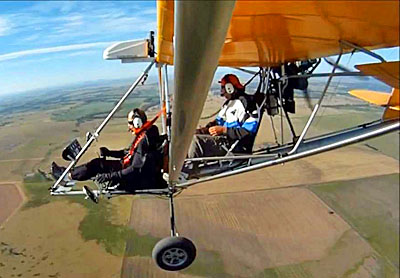
“With floats it can be used for Introductory Flights as a SLSA,” added Ed. Training pilots for towing required a second seat, though it is commonly, and easily, removed along with the aft joystick and pedals.
Interested in micro spraying? “My website has tax calculator link to see federal tax benefits,” reported Ed. (calculator is another website) Also some videos.
Get more info on this hard-working aircraft on Ed’s website, then click Rancher. Go here to see more of Dragonfly’s history.
 You may not know this Dragonfly airplane but I do. Very well. Since before it was called Dragonfly, I followed the development of this unusual aircraft by Bobby Bailey. You probably don’t know him either but he’s one of the most inventive light aircraft designers. A man of very few words, he prefers to create than to talk about it.
Dragonfly is an important icon in the hang gliding community. This aircraft was purpose-built to tow hang gliders aloft. At a place near Sun ‘n Fun called Wallaby Ranch, this happens nearly every day of the year. Proprietor Malcolm Jones founded “the Ranch” in 1992. He has a fleet of Dragonflys that he uses to tow up experts, students learning to fly, or almost anyone wanting to get an introduction to hang gliding.
Dragonfly has been fantastically productive, towing so many thousands of flights that I doubt they could be accurately counted.
You may not know this Dragonfly airplane but I do. Very well. Since before it was called Dragonfly, I followed the development of this unusual aircraft by Bobby Bailey. You probably don’t know him either but he’s one of the most inventive light aircraft designers. A man of very few words, he prefers to create than to talk about it.
Dragonfly is an important icon in the hang gliding community. This aircraft was purpose-built to tow hang gliders aloft. At a place near Sun ‘n Fun called Wallaby Ranch, this happens nearly every day of the year. Proprietor Malcolm Jones founded “the Ranch” in 1992. He has a fleet of Dragonflys that he uses to tow up experts, students learning to fly, or almost anyone wanting to get an introduction to hang gliding.
Dragonfly has been fantastically productive, towing so many thousands of flights that I doubt they could be accurately counted.

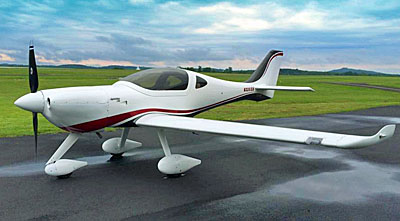 I readily admit I find
I readily admit I find 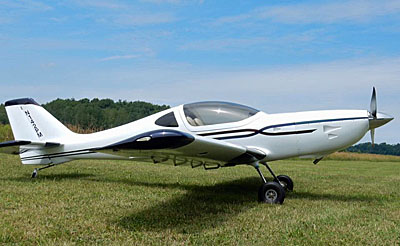 “My wife, Kathy, and I live in Chautauqua County in western New York. I’ve flown a converted Piper Colt out of a small grass strip airport (D79) at the end of Chautauqua Lake since 2004. After a few years , I thought I would like something a little ‘zippier.’
“My wife, Kathy, and I live in Chautauqua County in western New York. I’ve flown a converted Piper Colt out of a small grass strip airport (D79) at the end of Chautauqua Lake since 2004. After a few years , I thought I would like something a little ‘zippier.’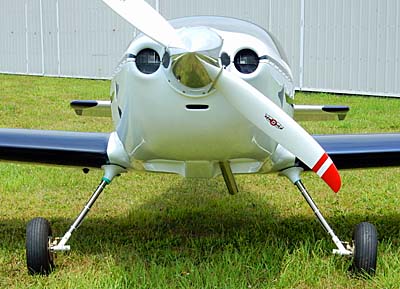 “While in construction, I decided I would commit to the tail wheel conversion. At the same time, just to see if it could be done, I decided to modify Lightning’s controls to create center stick, another thing the factory had not done. I thought this would make entry easier and also let my wife have her own uncluttered space. This was my first project and at the rate I was going, I figured I wasn’t going be doing too many of these so I wanted to do this one exactly how I wanted it.
“While in construction, I decided I would commit to the tail wheel conversion. At the same time, just to see if it could be done, I decided to modify Lightning’s controls to create center stick, another thing the factory had not done. I thought this would make entry easier and also let my wife have her own uncluttered space. This was my first project and at the rate I was going, I figured I wasn’t going be doing too many of these so I wanted to do this one exactly how I wanted it.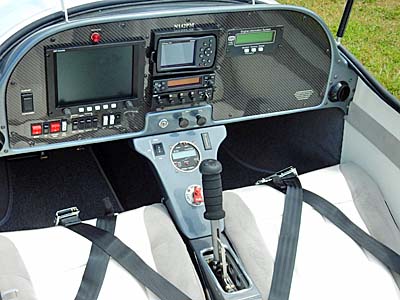 “At this time I’ve got about 2,500 hours into it. Although the empty CG moved a little more than an inch aft with the tail wheel, we are still well within the envelope and Light-Sport limit with two people and 20 gallons of fuel.
“At this time I’ve got about 2,500 hours into it. Although the empty CG moved a little more than an inch aft with the tail wheel, we are still well within the envelope and Light-Sport limit with two people and 20 gallons of fuel.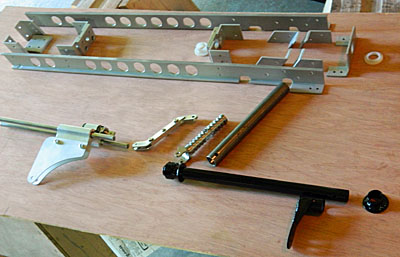 “This is way more plane than I could have ever imagined for myself.”
“This is way more plane than I could have ever imagined for myself.”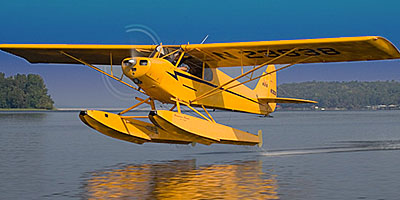 When summer rolls around and the sweat rolls off, it’s a perfect time to think about float flying. In the Light-Sport Aircraft or light kit-built airplane space, you are lucky to have a broad number of choices. This includes seaplanes (with boat hulls), floatplanes (land planes equipped with floats) or either of those on aircraft such as weight-shift trikes.
When summer rolls around and the sweat rolls off, it’s a perfect time to think about float flying. In the Light-Sport Aircraft or light kit-built airplane space, you are lucky to have a broad number of choices. This includes seaplanes (with boat hulls), floatplanes (land planes equipped with floats) or either of those on aircraft such as weight-shift trikes.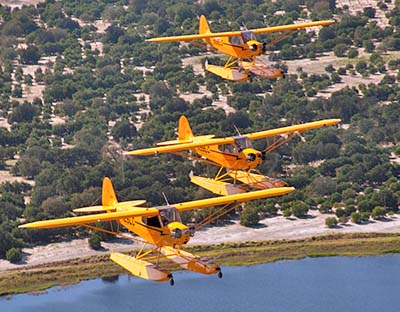 Legend’s floatplane offering boasts advantages. “It weighs less than comparable aircraft, cost less, and came with the added advantage of doors and windows on both sides of the cockpit,” observed the company. This design feature — not present on the original Piper models — is especially appropriate for float-equipped aircraft, offering egress from either side while docking.
Legend’s floatplane offering boasts advantages. “It weighs less than comparable aircraft, cost less, and came with the added advantage of doors and windows on both sides of the cockpit,” observed the company. This design feature — not present on the original Piper models — is especially appropriate for float-equipped aircraft, offering egress from either side while docking.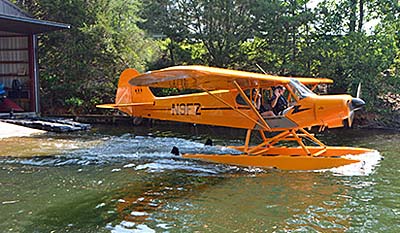
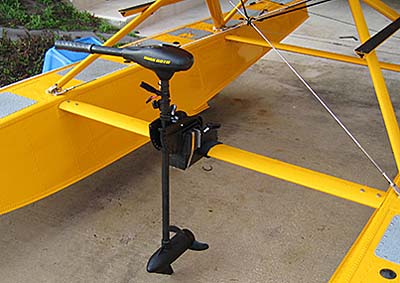
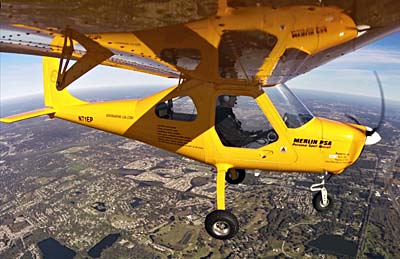
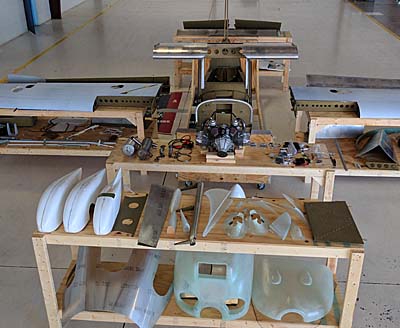
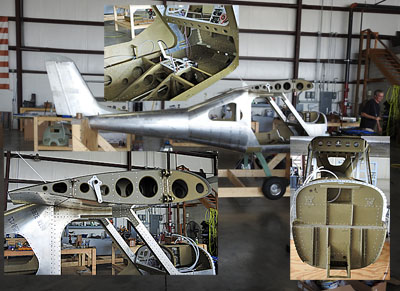 To see for myself, I went to observe a Merlin PSA under construction.
To see for myself, I went to observe a Merlin PSA under construction.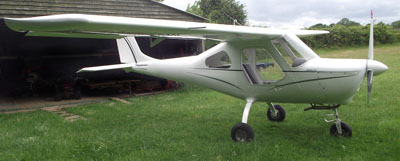 Merlin QBK also includes composite gear, wheels, brakes, control and fuel systems. The overall basic airframe costs only $16,500.
Merlin QBK also includes composite gear, wheels, brakes, control and fuel systems. The overall basic airframe costs only $16,500.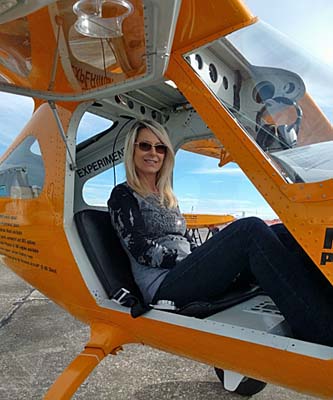 Instruments, interior, options, and paint will add more but Aeromarine LSA owner Chip Erwin reports you can get airborne for around $35,000. With the Rotax 582, that expense looks achievable and those who prefer four strokes could still finish for $40-45,000. Such investments purchase quite a bit of airplane for a sum many can afford.
Instruments, interior, options, and paint will add more but Aeromarine LSA owner Chip Erwin reports you can get airborne for around $35,000. With the Rotax 582, that expense looks achievable and those who prefer four strokes could still finish for $40-45,000. Such investments purchase quite a bit of airplane for a sum many can afford.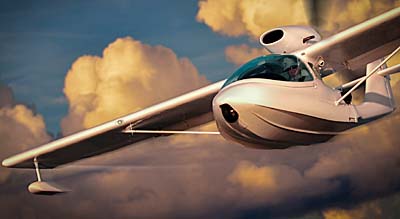
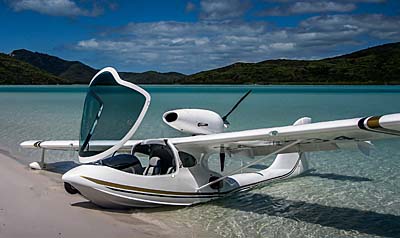 For AirMax, which recently reentered the U.S. market after a business reorganization (see
For AirMax, which recently reentered the U.S. market after a business reorganization (see 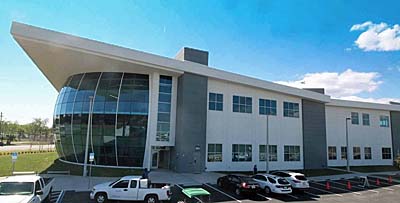
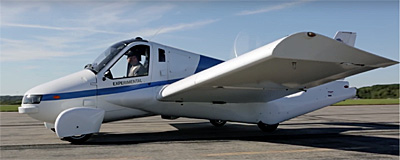
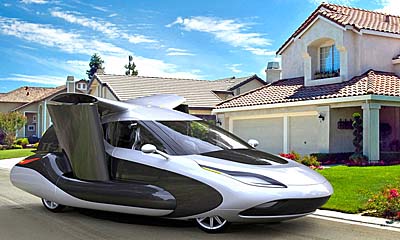 Terrafugia first announced their Transition roadable airplane in 2006, flying a proof-of-concept aircraft in 2009 along with a demonstration before attendees of
Terrafugia first announced their Transition roadable airplane in 2006, flying a proof-of-concept aircraft in 2009 along with a demonstration before attendees of 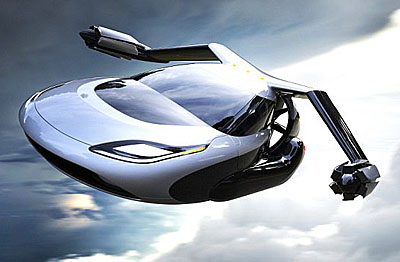 The electric motors that are hidden inside the body during ground operations allow the TF-X to takeoff vertically before morphing,
The electric motors that are hidden inside the body during ground operations allow the TF-X to takeoff vertically before morphing, 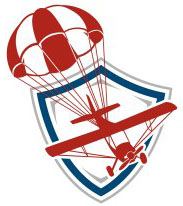 The ease of the trip in one of our modern flying machines with a big digital screen showing the way could lull you into crossing a large lake between you and your destination.
The ease of the trip in one of our modern flying machines with a big digital screen showing the way could lull you into crossing a large lake between you and your destination.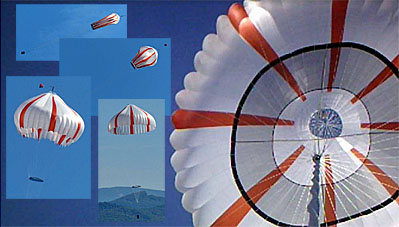
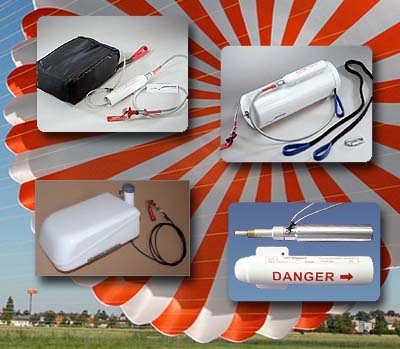
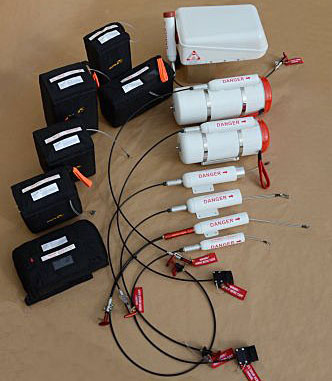 I’ll tell you from my four trips to the Bahamas flying that such crossings completely out of sight of land were enormously more enjoyable with a parachute than without. I knew I had a way out if the worst happened.
I’ll tell you from my four trips to the Bahamas flying that such crossings completely out of sight of land were enormously more enjoyable with a parachute than without. I knew I had a way out if the worst happened.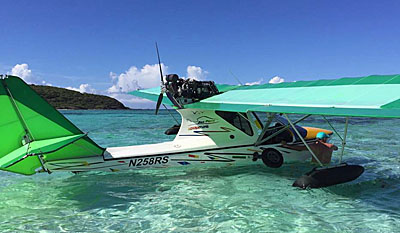 Let’s make an important point right up front. Seaplanes cost more than land planes. A fully-built, ASTM-compliant LSA seaplane starts at $150,000 and can go way up from that point. With a boat hull and retractable gear, of course, these water birds cost more to manufacture.
Let’s make an important point right up front. Seaplanes cost more than land planes. A fully-built, ASTM-compliant LSA seaplane starts at $150,000 and can go way up from that point. With a boat hull and retractable gear, of course, these water birds cost more to manufacture.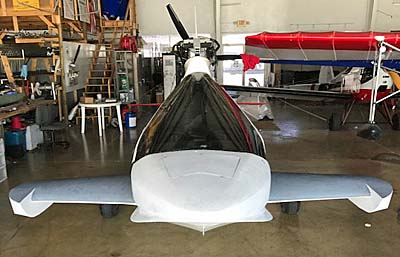 Hammerhead “canard sponson” — Although it looks like (and is) an add-on feature, this could easily catch on for Aventura buyers and current owners. Dispensing with the wing-mounted sponsons you see in the nearby photos, their canard sponson offers more than a cool look.
Hammerhead “canard sponson” — Although it looks like (and is) an add-on feature, this could easily catch on for Aventura buyers and current owners. Dispensing with the wing-mounted sponsons you see in the nearby photos, their canard sponson offers more than a cool look.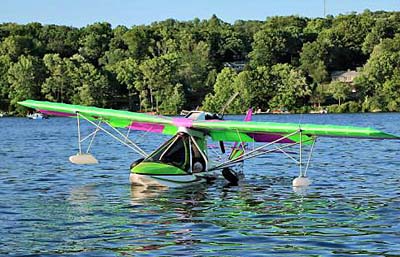 “Aventura with these canard sponsons flew fine,” added Alex, “but the assembly was heavy.” Eliminating the fuel tanks considerably lightened the component. “They are made of very dense and very light foam,” said Alex, “The construction uses technology borrowed from boats and is very strong.”
“Aventura with these canard sponsons flew fine,” added Alex, “but the assembly was heavy.” Eliminating the fuel tanks considerably lightened the component. “They are made of very dense and very light foam,” said Alex, “The construction uses technology borrowed from boats and is very strong.”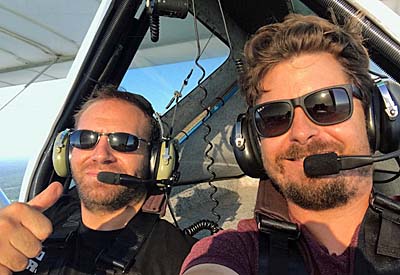
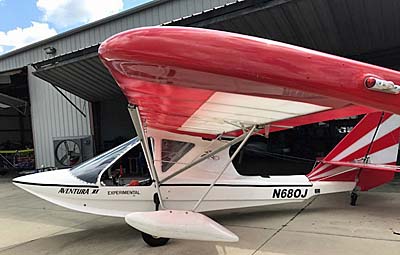 Support for Buyers — Beside making airframes in kit form, Aero Advenure does regular refurbishment of previously-built Aventuras. “We have two Aventura IIs in inventory right now. One is a 2006 model with just 74 hours on it; another is a 2009 model that has close to 400 hours logged,” Alex said. I predict these won’t last long but Aero Adventure will happily make more at their DeLand, Florida location (right next door to Aerolite 103 manufacturer,
Support for Buyers — Beside making airframes in kit form, Aero Advenure does regular refurbishment of previously-built Aventuras. “We have two Aventura IIs in inventory right now. One is a 2006 model with just 74 hours on it; another is a 2009 model that has close to 400 hours logged,” Alex said. I predict these won’t last long but Aero Adventure will happily make more at their DeLand, Florida location (right next door to Aerolite 103 manufacturer, 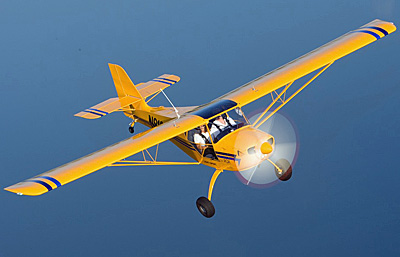 Aerotrek
Aerotrek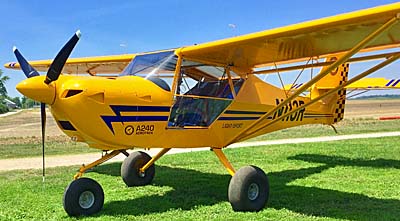 “Funny enough,” Rob wrote, “for the last nine years since I also began bringing the Aeropro taildraggers into the U.S., where I originally only brought in the tricycle-gear planes. Our sales have been almost exactly 50/50 tricycle/taildragger. In the last 10 months, though, the ratio has swung heavily to tricycle-gear.”
“Funny enough,” Rob wrote, “for the last nine years since I also began bringing the Aeropro taildraggers into the U.S., where I originally only brought in the tricycle-gear planes. Our sales have been almost exactly 50/50 tricycle/taildragger. In the last 10 months, though, the ratio has swung heavily to tricycle-gear.”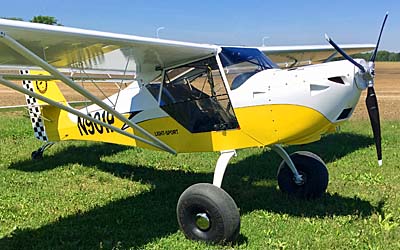 “Our regular A240 tundra tires are an 18-inch diameter tire on the mains and a 15-inch tire on the front. We can also put a 22-inch tire on the mains and an 18-inch tire on the front (photo),” explained Rob. “This works really, really well!”
“Our regular A240 tundra tires are an 18-inch diameter tire on the mains and a 15-inch tire on the front. We can also put a 22-inch tire on the mains and an 18-inch tire on the front (photo),” explained Rob. “This works really, really well!”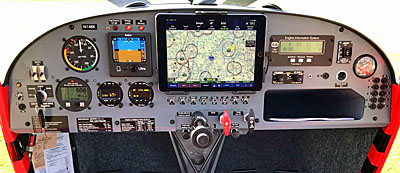 Aerotrek kits — “I get lots of email and calls asking about ‘kits.’ We don’t sell kits, never have, and never will sell the Aeropro planes as kits (Aeropro is the European manufacturer of his Aerotrek aircraft.) “I refer them to [other companies] though they usually figure out they will probably do better to buy one of our ready-to-fly SLSA planes than buy a kit.”
Aerotrek kits — “I get lots of email and calls asking about ‘kits.’ We don’t sell kits, never have, and never will sell the Aeropro planes as kits (Aeropro is the European manufacturer of his Aerotrek aircraft.) “I refer them to [other companies] though they usually figure out they will probably do better to buy one of our ready-to-fly SLSA planes than buy a kit.”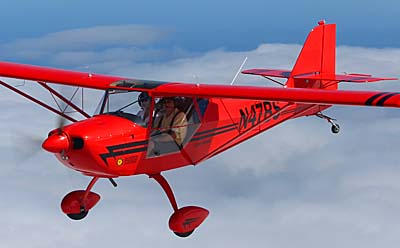 “BasicMed” — “This thing has, from everything I can tell, turned-out to be a bummer/non-starter for just about everybody that might have been interested in LSA-type aircraft. Some of these were holding back, hoping that the pending new rules were going to just do away with the Third Class Medical completely. Instead, what we got [BasicMed] really won’t work well, or whatsoever, for most people that might buy our sort of LSA planes. So, they are back.”
“BasicMed” — “This thing has, from everything I can tell, turned-out to be a bummer/non-starter for just about everybody that might have been interested in LSA-type aircraft. Some of these were holding back, hoping that the pending new rules were going to just do away with the Third Class Medical completely. Instead, what we got [BasicMed] really won’t work well, or whatsoever, for most people that might buy our sort of LSA planes. So, they are back.”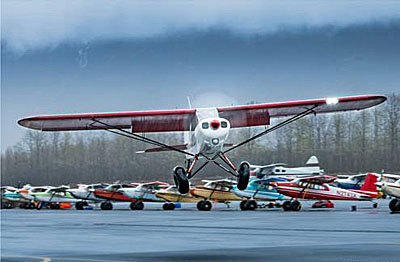
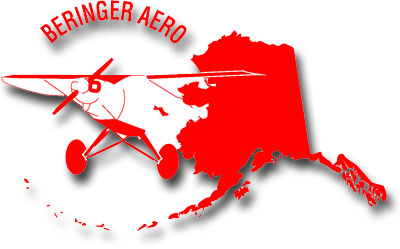 Beringer, know for great ideas like their
Beringer, know for great ideas like their 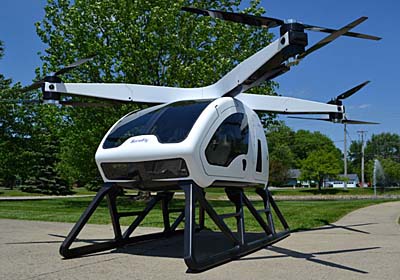 News from the Paris Air Show probably does not interest you too much, unless you care about the airliner you will fly in eight years from now. However, one article caught my interest because of a few references. (The article I found is available
News from the Paris Air Show probably does not interest you too much, unless you care about the airliner you will fly in eight years from now. However, one article caught my interest because of a few references. (The article I found is available 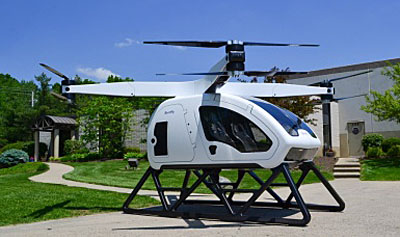 Additionally, SureFly is not on the market yet and when (if?) it does arrive, it might be lots more expensive.
Additionally, SureFly is not on the market yet and when (if?) it does arrive, it might be lots more expensive.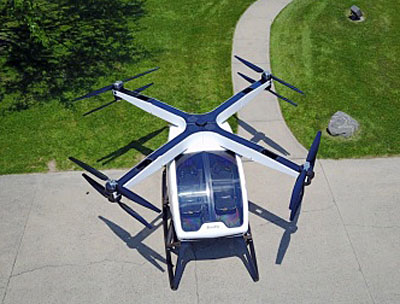 • Early models will be pilot-operated, according to the Vertical magazine article. The goal is to introduce future models featuring autonomous flight capable of carrying payloads of up to 400 pounds. To my view, every developer needs to speak to “autonomous flight” if they want to gain media coverage or raise big buck investments.
• Early models will be pilot-operated, according to the Vertical magazine article. The goal is to introduce future models featuring autonomous flight capable of carrying payloads of up to 400 pounds. To my view, every developer needs to speak to “autonomous flight” if they want to gain media coverage or raise big buck investments.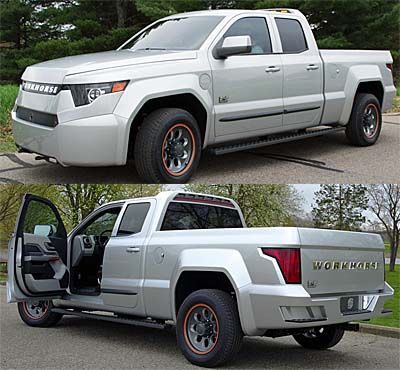
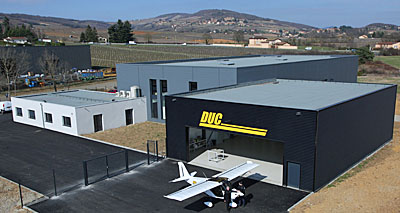
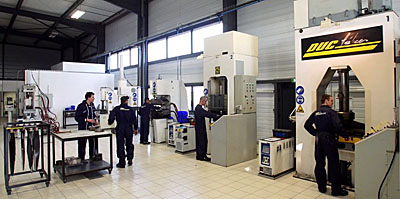 “Lot of guests will arrive all long the day by plane but the party will officially start at 8 p.m. with the visit of the new facilities, a photoBooth on flying topics, a Beaujolais culinary discovery, a cocktail dinner, a music DJ, and some animations throughout the night,” said DUC representatives.
“Lot of guests will arrive all long the day by plane but the party will officially start at 8 p.m. with the visit of the new facilities, a photoBooth on flying topics, a Beaujolais culinary discovery, a cocktail dinner, a music DJ, and some animations throughout the night,” said DUC representatives.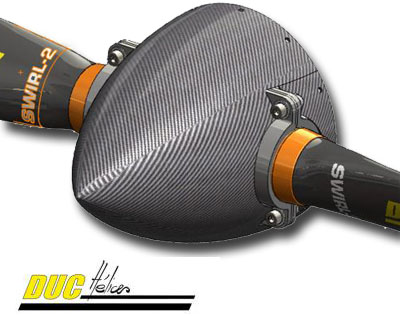 The good news is, DUC props are available in the USA thanks to
The good news is, DUC props are available in the USA thanks to 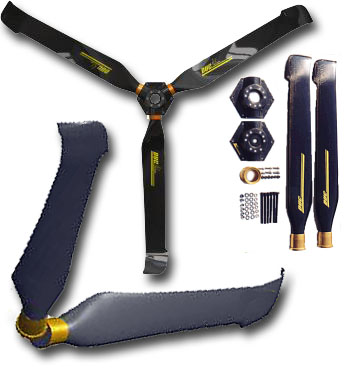 SportairUSA lists some of your choices in props from DUC.
SportairUSA lists some of your choices in props from DUC.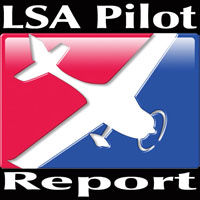
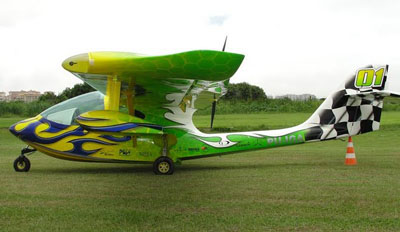 Entering is simple with its widely front-opening canopy; you step on the solid floor and sit. Canopy optics were superb and you have 270-degree visibility thanks to rear quarter windows.
Entering is simple with its widely front-opening canopy; you step on the solid floor and sit. Canopy optics were superb and you have 270-degree visibility thanks to rear quarter windows.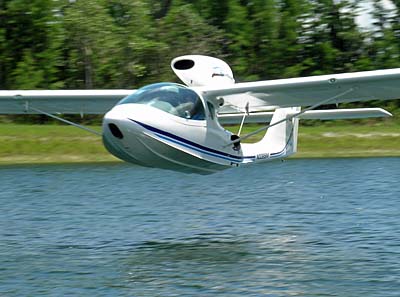 A 100-hp Rotax 912 AirMax moves SeaMax easily on land or water. My experience on the water at 45 mph showed SeaMax to be a great little speedboat. Turning in this configuration employs the water rudder, which extends from inside the air rudder. You use opposite aileron to keep from sticking a sponson too deeply in the water.
A 100-hp Rotax 912 AirMax moves SeaMax easily on land or water. My experience on the water at 45 mph showed SeaMax to be a great little speedboat. Turning in this configuration employs the water rudder, which extends from inside the air rudder. You use opposite aileron to keep from sticking a sponson too deeply in the water.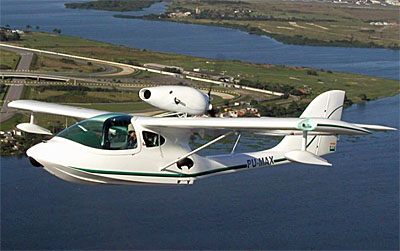 Climbout at 70 mph produced about 1,000 fpm initially. SeaMax sustained climb at about 700 fpm with 10 degrees of flaps.
Climbout at 70 mph produced about 1,000 fpm initially. SeaMax sustained climb at about 700 fpm with 10 degrees of flaps.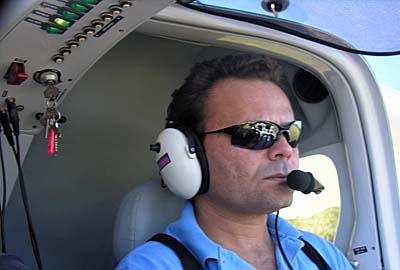
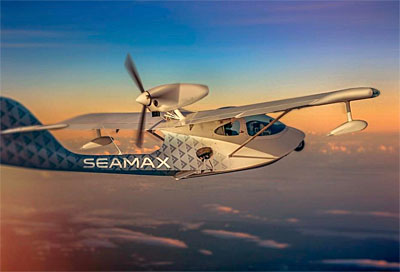 Stalls were mild in my trials. From most entries, stalls appeared to break benignly in the low 40 mph range though the factory says 36 mph with optimal flaps. Longitudinal stability checks and power changes showed SeaMax to be a generally stable aircraft; it recovered from mild disturbances of the stick on its own and with only a few oscillations.
Stalls were mild in my trials. From most entries, stalls appeared to break benignly in the low 40 mph range though the factory says 36 mph with optimal flaps. Longitudinal stability checks and power changes showed SeaMax to be a generally stable aircraft; it recovered from mild disturbances of the stick on its own and with only a few oscillations.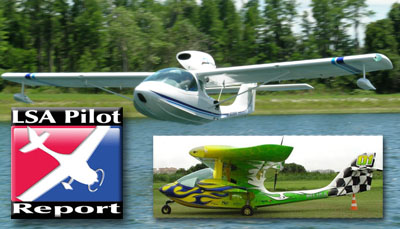
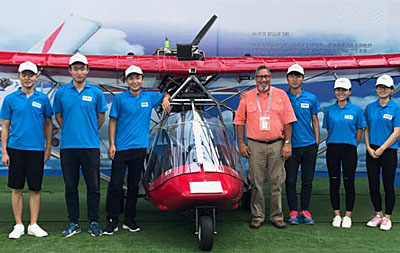
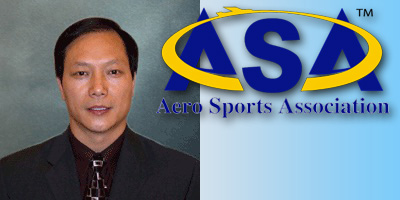
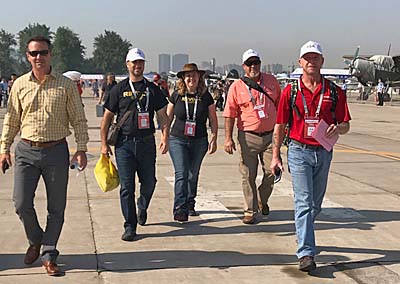
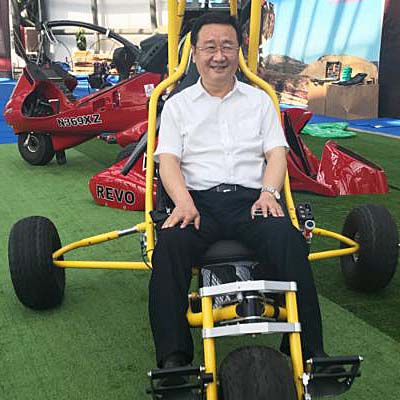
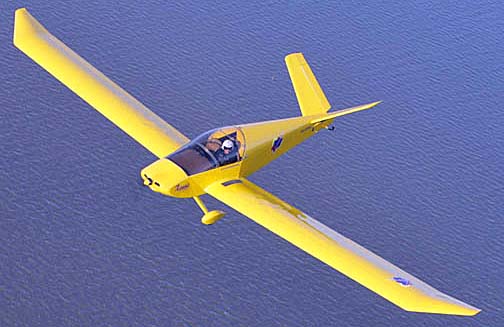 Sonex
Sonex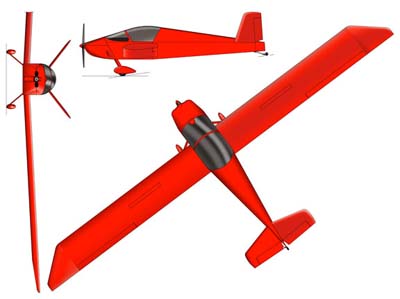 So, I got excited when I read the Sonex Aircraft announce the new Xenos B-Model. You can order a Xenos-B now, kits are shipping, and, earlier purchasers may wish to check out the
So, I got excited when I read the Sonex Aircraft announce the new Xenos B-Model. You can order a Xenos-B now, kits are shipping, and, earlier purchasers may wish to check out the 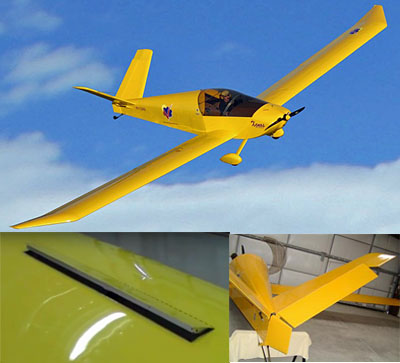
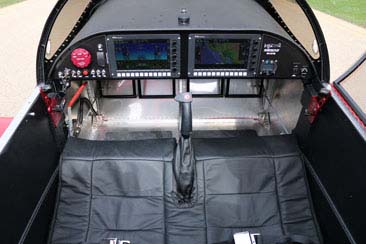
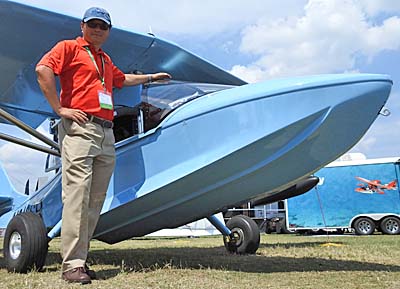 Adam Yang, the CEO of
Adam Yang, the CEO of 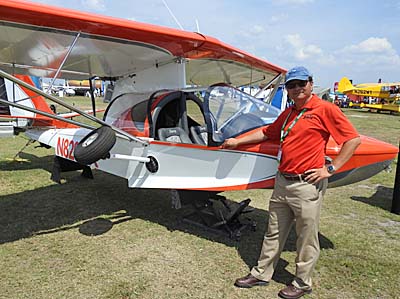 Adam expressed, “I am grateful for all the people who supported the endeavor to make Searey a strong manufacturer of the fun, practical and safe aircraft including employees, customers, contracted professionals, distributors, suppliers, local government officials, pilots, instructors, Searey enthusiasts and their family members. Without everybody’s efforts and selfless support, it would have been absolutely impossible to achieve what we have today.”
Adam expressed, “I am grateful for all the people who supported the endeavor to make Searey a strong manufacturer of the fun, practical and safe aircraft including employees, customers, contracted professionals, distributors, suppliers, local government officials, pilots, instructors, Searey enthusiasts and their family members. Without everybody’s efforts and selfless support, it would have been absolutely impossible to achieve what we have today.”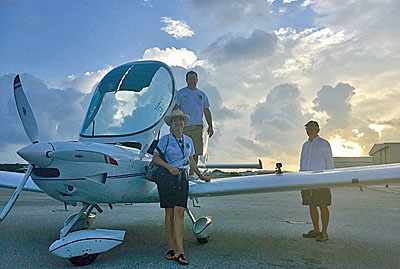 Flying light aircraft to Cuba seems to be a kind of new normal. Whatever the politics of the relations between governments, the fact remains that pilots enjoy using their aircraft and want to fly to interesting destinations. To many, Cuba is one of those places, a reasonably short flight from the USA… albeit over a stretch of mighty ocean.
Flying light aircraft to Cuba seems to be a kind of new normal. Whatever the politics of the relations between governments, the fact remains that pilots enjoy using their aircraft and want to fly to interesting destinations. To many, Cuba is one of those places, a reasonably short flight from the USA… albeit over a stretch of mighty ocean.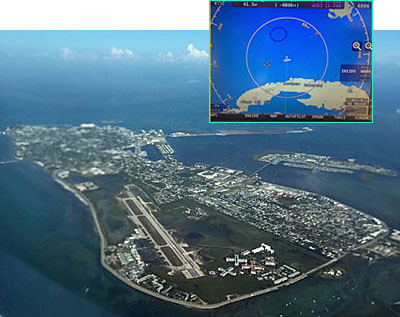 Starinsky and Schrade saw the rally as an opportunity to forge new relationships and take the first steps in revitalizing the once vibrant general aviation community in Cuba. They also sought to commemorate the first aviators to make the crossing from the Florida Keys to Cuba. “Rivals Domingo Rosillo del Toro and Augustin Parla accomplished the feat of the longest flights over water in May 1913,” said Cruiser Aircraft.
Starinsky and Schrade saw the rally as an opportunity to forge new relationships and take the first steps in revitalizing the once vibrant general aviation community in Cuba. They also sought to commemorate the first aviators to make the crossing from the Florida Keys to Cuba. “Rivals Domingo Rosillo del Toro and Augustin Parla accomplished the feat of the longest flights over water in May 1913,” said Cruiser Aircraft.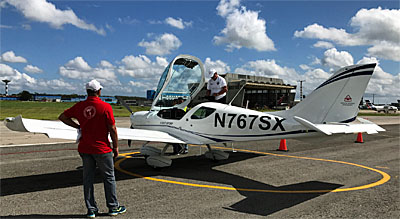 Like del Toro and Parla, the Cruiser team faced unfamiliar and possibly treacherous circumstances. This was a new experience for the pilots.
Like del Toro and Parla, the Cruiser team faced unfamiliar and possibly treacherous circumstances. This was a new experience for the pilots.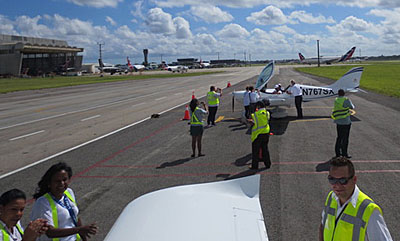 After a three-day visit in Havana, the Cruiser team returned to Florida clearing customs at KEYW before returning home to North Perry Monday on May 22.
After a three-day visit in Havana, the Cruiser team returned to Florida clearing customs at KEYW before returning home to North Perry Monday on May 22.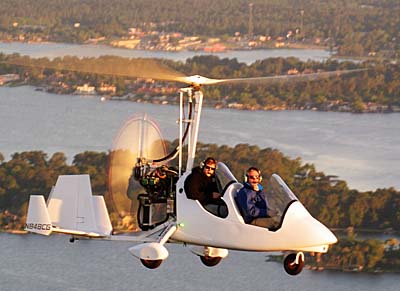
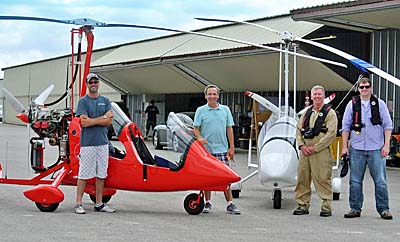
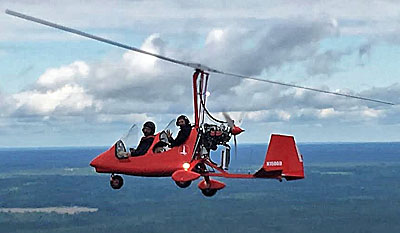
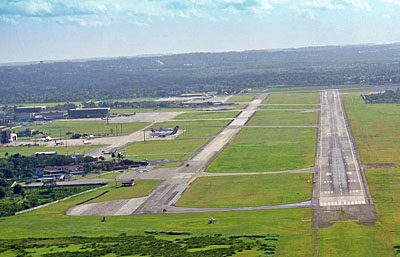
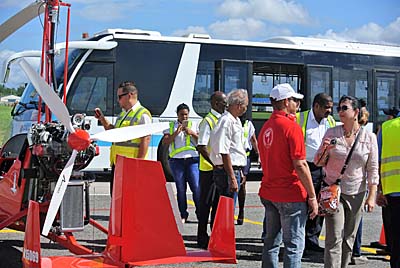
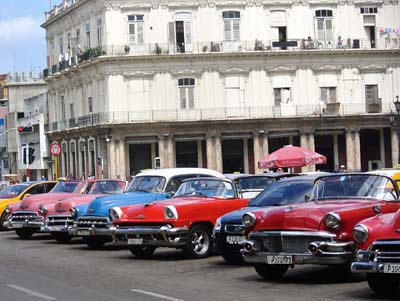
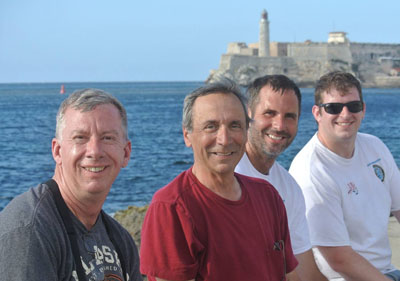
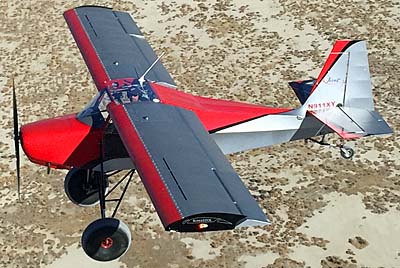 Both these companies are to be congratulated for advancing the light aircraft field, but one aircraft really lit this space on fire:
Both these companies are to be congratulated for advancing the light aircraft field, but one aircraft really lit this space on fire: 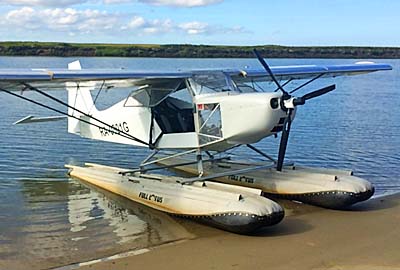 Thanks to those flight qualities, one was pressed into scientific survey service in a difficult environment. Russian biologists sought an aircraft to conduct surveys of wildlife populations along the Northeastern Russian Coast, above the Arctic Circle. George V. Kirtaev ordered a SuperSTOL kit from Just Aircraft in the summer of 2015. Russia allows homebuilts to be constructed, certified and flown in their airspace.
Thanks to those flight qualities, one was pressed into scientific survey service in a difficult environment. Russian biologists sought an aircraft to conduct surveys of wildlife populations along the Northeastern Russian Coast, above the Arctic Circle. George V. Kirtaev ordered a SuperSTOL kit from Just Aircraft in the summer of 2015. Russia allows homebuilts to be constructed, certified and flown in their airspace.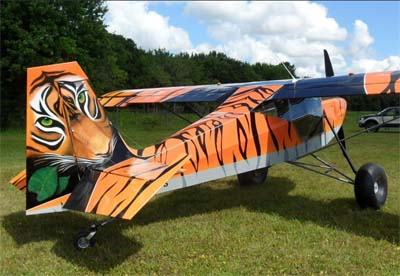 Wing slats combined with large surface area Fowler flaps allow the aircraft to be flown at extremely high angles of attack, permitting it to drop into small or inclined clearings. This provides access to considerably more off-airport landing sites, making the SuperStol one of the most versatile backcountry machines available. With the new wing configuration, Just Aircraft said the aircraft can cruise at 110 mph, land at 32 mph, and take off or land with as little as 150 feet of runway …or maybe a lot less.
Wing slats combined with large surface area Fowler flaps allow the aircraft to be flown at extremely high angles of attack, permitting it to drop into small or inclined clearings. This provides access to considerably more off-airport landing sites, making the SuperStol one of the most versatile backcountry machines available. With the new wing configuration, Just Aircraft said the aircraft can cruise at 110 mph, land at 32 mph, and take off or land with as little as 150 feet of runway …or maybe a lot less.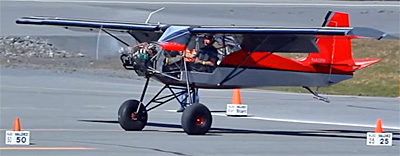 Just Aircraft offers several SuperSTOL engine options including the original
Just Aircraft offers several SuperSTOL engine options including the original 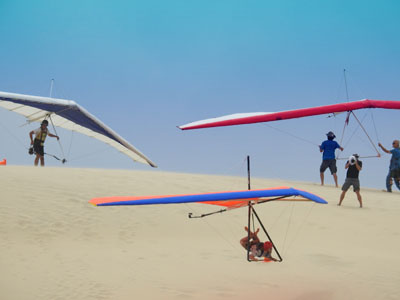 Wind blows across the dunes here in Nags Head in a way that first drew the Wright Brothers 114 years ago. Indeed, a couple miles north a memorial commemorates the famous bicycle shop owners who made history in this breezy outpost on the Outer Banks of North Carolina.
Wind blows across the dunes here in Nags Head in a way that first drew the Wright Brothers 114 years ago. Indeed, a couple miles north a memorial commemorates the famous bicycle shop owners who made history in this breezy outpost on the Outer Banks of North Carolina.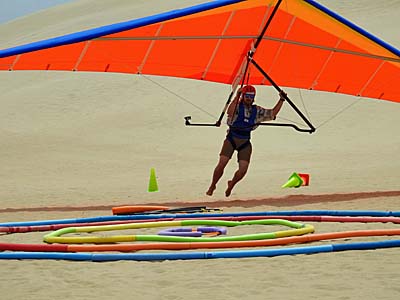 Fun abounds and no wonder. “Spec” is sponsored by Kitty Hawk Kites supported by other local businesses. Kitty Hawk — Nags Head — the Outer Banks… this is a major tourist haven. Mile upon mile of beach houses are rented to millions of tourists from all over the east cost.
Fun abounds and no wonder. “Spec” is sponsored by Kitty Hawk Kites supported by other local businesses. Kitty Hawk — Nags Head — the Outer Banks… this is a major tourist haven. Mile upon mile of beach houses are rented to millions of tourists from all over the east cost.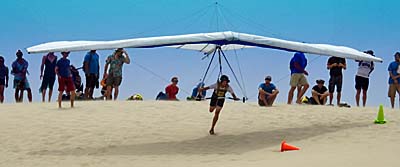 Powered aircraft pilot might not think this appeals to them. That’s understandable. Yet those of us who spent years in hang gliding can attest to the good times this kind of flying provides. More than any other aircraft, a hang glider comes closest to delivering the childhood fantasy of your arms as wings. Angels of the sky? Maybe, but if you fly, you know the enjoyment going aloft can bring; sand dune hang gliding is another fine way to enjoy the air.
Powered aircraft pilot might not think this appeals to them. That’s understandable. Yet those of us who spent years in hang gliding can attest to the good times this kind of flying provides. More than any other aircraft, a hang glider comes closest to delivering the childhood fantasy of your arms as wings. Angels of the sky? Maybe, but if you fly, you know the enjoyment going aloft can bring; sand dune hang gliding is another fine way to enjoy the air.